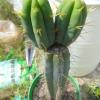Sign in to follow this
Followers
0

Is it true that named clones are negligibly different from standard varieties?
By
Glass Roots, in Cacti & Succulents

By
Glass Roots, in Cacti & Succulents